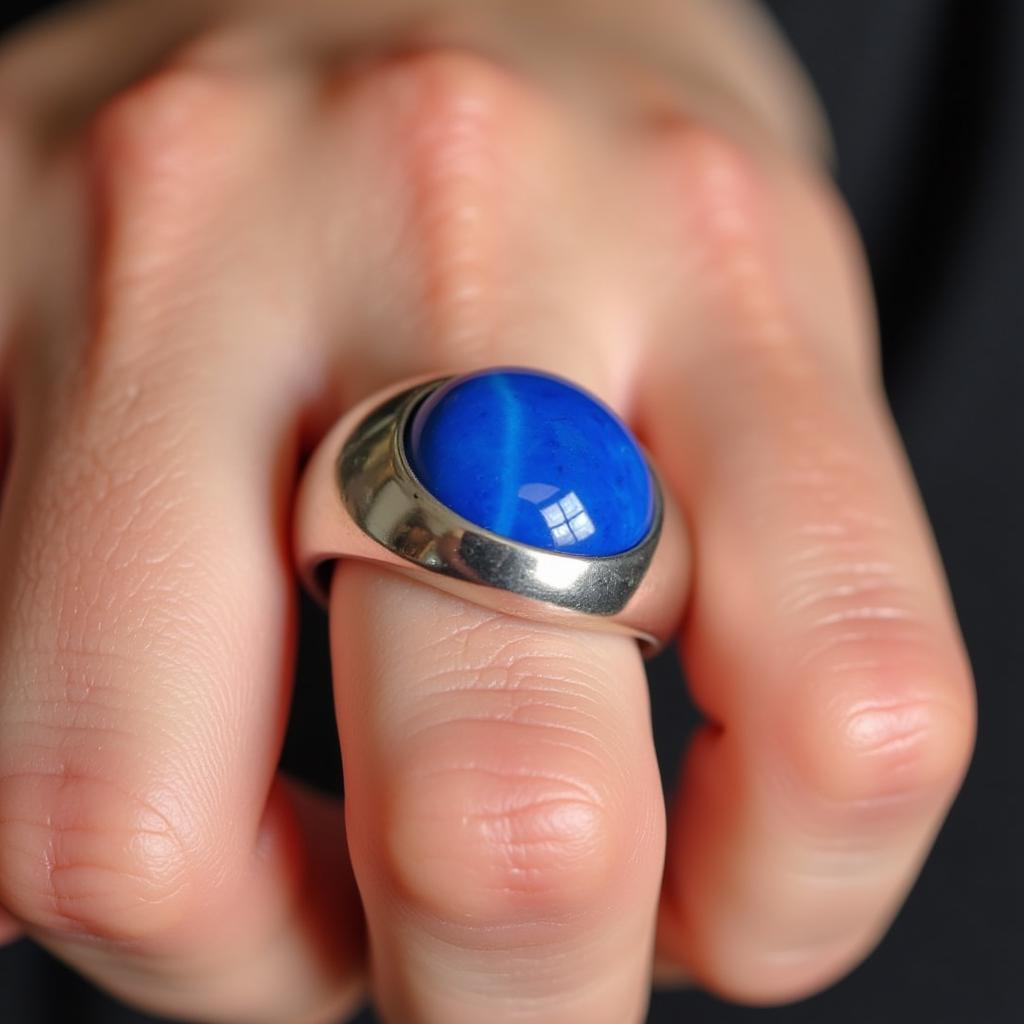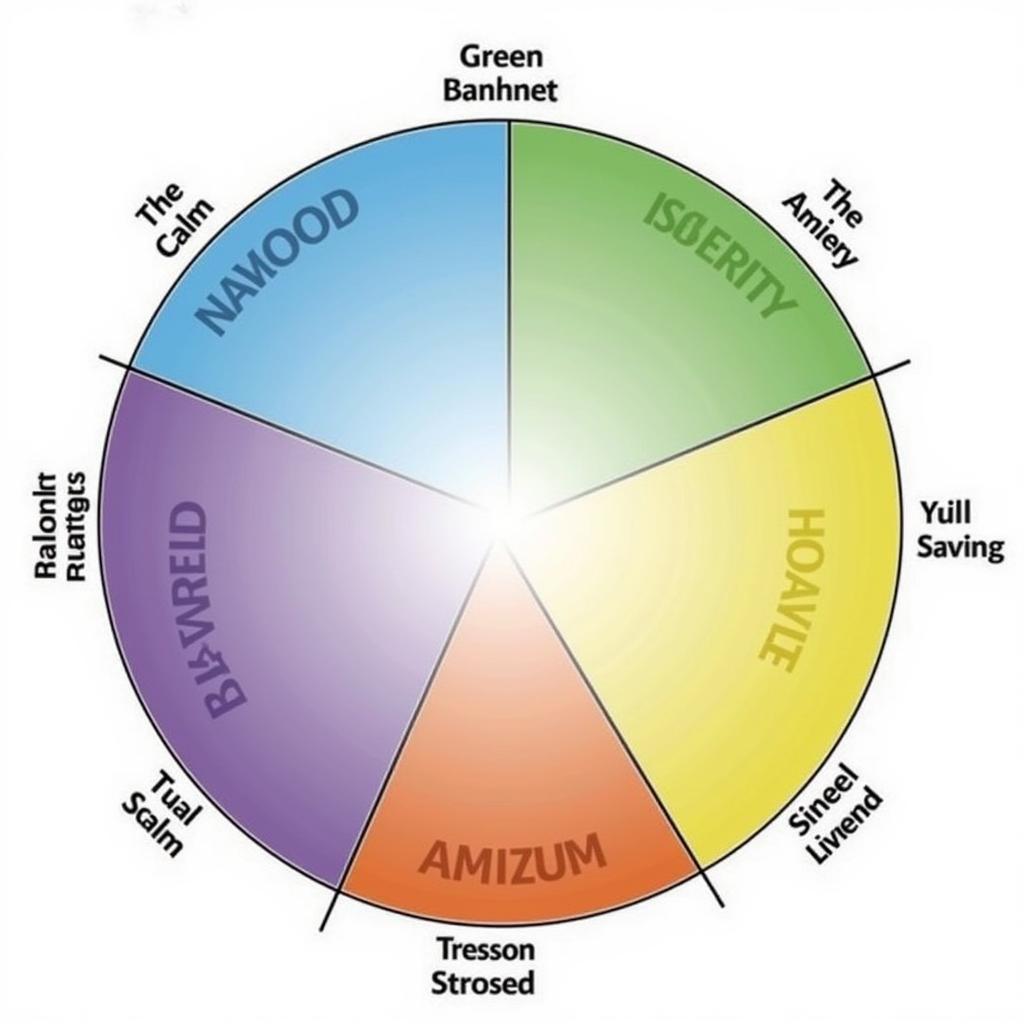Mood rings, those iridescent accessories that were all the rage in the 70s (and are making a comeback!), claim to reflect the wearer’s emotions through a spectrum of colors. But what do these colors actually mean? Are they a true reflection of our inner feelings, or just a fun fashion statement? Let’s dive into the fascinating world of mood rings and decode the language of their color-changing magic.
The Science Behind the Shifting Shades
Before we unravel the meaning of each color, let’s understand the science that makes these rings so captivating. Contrary to popular belief, mood rings don’t contain mystical elements or react directly to our emotions. Their secret lies in thermochromic pigments embedded within the ring’s stone, usually made of glass or quartz.
These special pigments are sensitive to temperature fluctuations, even subtle ones caused by changes in your body heat. As your body temperature shifts, so does the structure of the pigment molecules, resulting in a change of color.
 Mood Ring Color Change
Mood Ring Color Change
Mood Ring Colors and Their Meanings
While the science is rooted in temperature, the interpretation of mood ring colors is where the fun begins. It’s important to remember that these interpretations are subjective and open to individual understanding. Think of them as a playful guide rather than a definitive emotional compass. Here’s a general guide to the most common mood ring colors and their associated emotions:
-
Blue: Often associated with calmness, serenity, and peace. A blue ring might suggest you’re feeling relaxed, content, or in a meditative state.
-
Green: Typically represents a balanced emotional state. If your ring is green, you might be feeling grounded, adaptable, and at ease with yourself and your surroundings.
-
Yellow: Often linked to happiness, optimism, and creativity. A yellow hue could indicate you’re feeling cheerful, inspired, or full of energy.
 Mood Ring Color Chart
Mood Ring Color Chart
-
Amber/Orange: Frequently associated with anxiety, stress, or nervousness. An amber or orange ring might suggest you’re feeling overwhelmed, agitated, or under pressure.
-
Brown/Black: Often interpreted as a sign of stress, negativity, or tension. If your ring turns brown or black, it could be a signal to take a step back, relax, and de-stress.
Mood Rings: Fun Fashion or Accurate Emotion Detector?
While mood rings can be a fun way to spark conversations and add a playful touch to your style, it’s crucial to remember that they shouldn’t be taken as a precise measure of your emotions.
“Mood rings can be a fun reflection of our internal state, but it’s important to remember they are influenced by external factors too,” says Dr. Emily Carter, a psychologist specializing in emotional well-being. “Our body temperature, and therefore the color of the ring, can be affected by things like the weather, physical activity, and even the food we eat.”
Beyond the Colors: Listening to Your Body’s Signals
Instead of solely relying on the color of your mood ring, use it as a springboard for self-reflection. If your ring changes color, take a moment to tune in to your body and emotions.
-
Ask yourself: What am I feeling right now? Are there any external factors that might be influencing my body temperature?
-
Practice mindfulness: Engage in activities that promote relaxation and emotional well-being, such as deep breathing, meditation, or spending time in nature.
Remember, the most accurate gauge of your emotions is your own internal compass. Mood rings can be a fun and whimsical addition to your accessory collection, sparking curiosity and conversation. But when it comes to understanding your emotional landscape, nothing replaces self-awareness and mindful introspection.
FAQ
1. Do mood rings work differently for everyone?
Mood rings work based on body temperature, which can vary slightly from person to person. However, the general color interpretations tend to be consistent.
2. Can I wear a mood ring in water?
It’s best to avoid getting your mood ring wet. Water can damage the thermochromic pigments or even seep into the ring, affecting its color-changing abilities.
3. How long do mood rings last?
The lifespan of a mood ring depends on its quality and how well it’s cared for. With proper care, a good quality mood ring can last for several years.
4. Can I change the color of my mood ring on purpose?
While you can’t consciously control your emotions to change the ring’s color, you can experiment with external temperatures. For instance, holding a warm cup of tea might temporarily change the ring’s hue.
5. Are mood rings harmful to wear?
Mood rings are generally safe to wear. They don’t emit any harmful radiation or contain any toxic substances.
Need More Information about Color?
For more insights into the fascinating world of colors and their impact on our lives, explore these related articles:
Do you have any other questions about mood rings or the meaning of colors? We’re here to help! Contact us at:
Phone Number: 0373298888
Email: [email protected]
Address: 86 Cầu Giấy, Hà Nội.
Our dedicated customer service team is available 24/7 to assist you.

